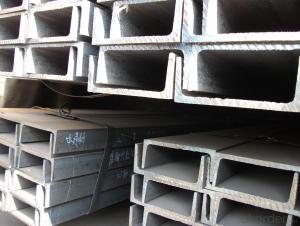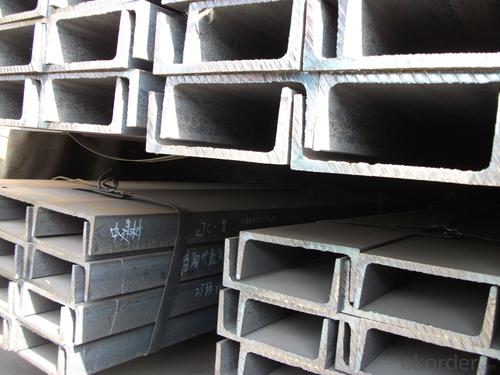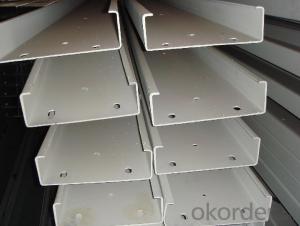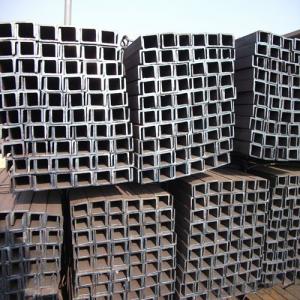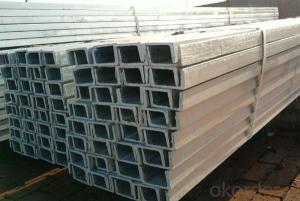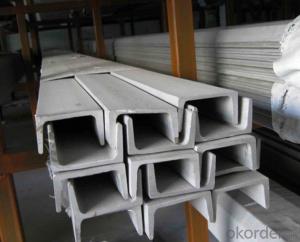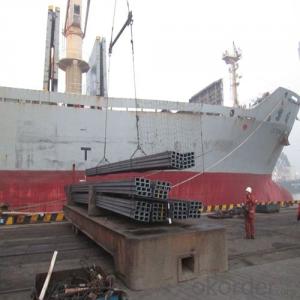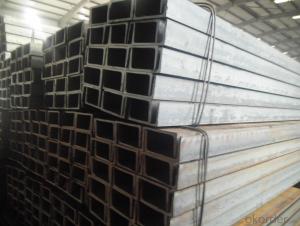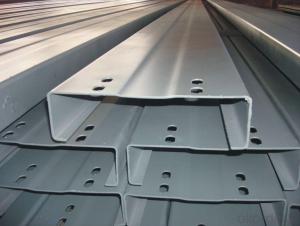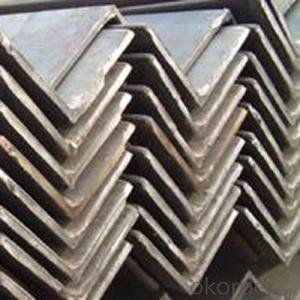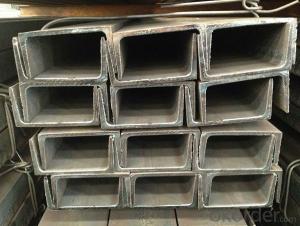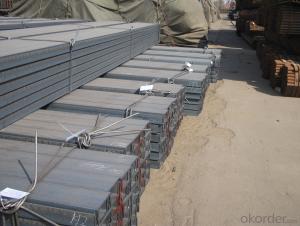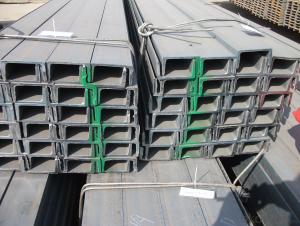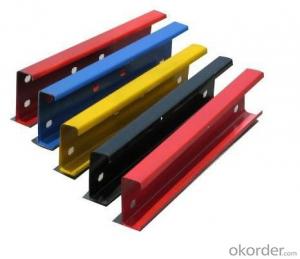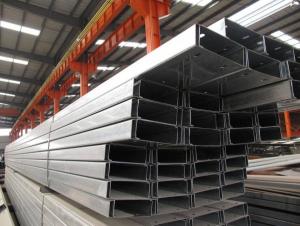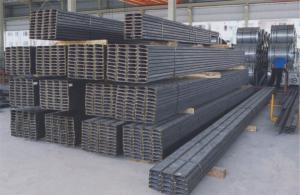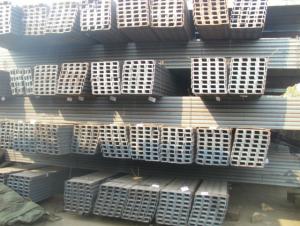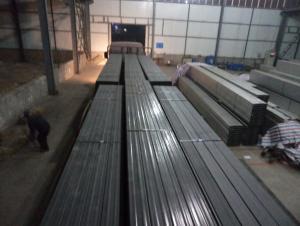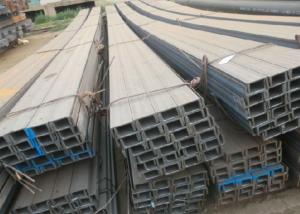JIS Standard Hot Rolled Steel U Channels
- Loading Port:
- Tianjin
- Payment Terms:
- TT OR LC
- Min Order Qty:
- -
- Supply Capability:
- 200000 m.t./month
OKorder Service Pledge
OKorder Financial Service
You Might Also Like
Specifications of JIS Standard Hot Rolled Steel U Channels:
| Original Place | Tangshan, China | Brand Name | Bridge |
| Standard | GB707-88, EN100025, JIS G3192, DIN 1026 | ||
| Sizes | 50mm to 300mm | ||
| Sales Volume/Year | 3000MT | ||
| Main Market | Middle East, Africa, Southeast As | ||
1.We are able to provide channel steel of top quality at attractive price.
2.Our products of channel steel have passed ISO9001:2008 Quality Management System Certification.
Usage/Applications of JIS Standard Hot Rolled Steel U Channels:
Channel Steel is usually used for building structure, vehicle manufacturing and other industrial structure and often used with i beam.
In details, the channel steel belongs to carbon structural steel which is applied to in the field of construction and machinery. The channel steel is usually used for arch-itechtural structure, and they could be welded in order to support or hang a vari-ety of facilities. They are also usually used in combination with I beam. Generally,the channel steel must possess perfect welding property, riveting property and mechanical property and so on.
Package & Delivery of JIS Standard Hot Rolled Steel U Channels:
The steel u channel will be packed in bundle with steel wire at each end of every bundle and color marking in order to help the customer to recognize his goods more easily at sight.
And steel u channel could be loaded into 20ft or 40ft container, or by bulk cargo. If the weight of each bundle reaches less than 3.5 mt, the loading by break bulk cargo should be choosed. When the weight of each bundle reaches less than 3mt, the loading by container should be choosed.
As for the transportaion from mill to loading port, the truck will be usually used. And the maximum quantity for each truck is 40mt.
All in all, we could do in accordance with customer's request.
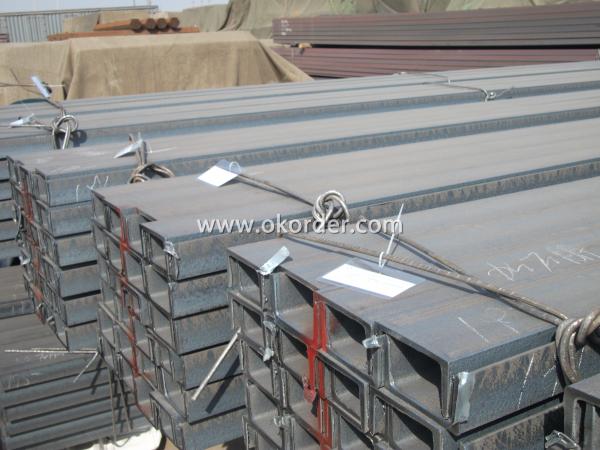
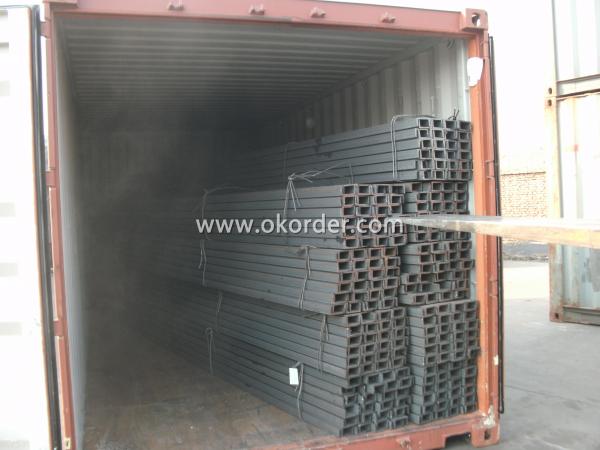
Production Flow of JIS Standard Hot Rolled Steel U Channels:
1.The steel billet shall be heated in the high temperature furnace.
2. The heated steel billet shall be rolled five to nine times with the aim of shaping the general figure of steel u channel.
3. The rolled steel u channel should be put onto the cooling bed to make the temperature low.
4. The steel u channel should be straighted on the straightener.
5. The straighted steel u channel will be cut into meters by saw, as per customer's requirements.
- Q: I have three houses, the length is 7 meters, the width is 4 meters, I would like to use a 4 meter trough board to do the support, and then put concrete slabs on the channel, the two floor of the roof also do so, can I do that? If it is possible to use a large trough plate, a thick concrete slab, and a thick steel bar for concrete slabs Thank you
- The concrete of channel steel is made of concrete and steel bar. This kind of floor has the advantages of firmness, durability, rigidity, high strength and good fire resistance, and is widely used at present. According to the construction method, it can be divided into two major categories: cast-in-place reinforced concrete floor and prefabricated reinforced concrete floor.
- Q: Can steel channels be used for mezzanine guardrails?
- Yes, steel channels can be used for mezzanine guardrails. Steel channels are often used for their strength and durability, making them suitable for providing a secure barrier and ensuring the safety of individuals on mezzanine floors.
- Q: What are the different methods for reinforcing steel channels?
- There are several methods for reinforcing steel channels, depending on the specific requirements and applications. Some of the common methods include: 1. Welding: Welding is a widely used method for reinforcing steel channels. It involves attaching additional steel plates or bars to the existing channel using high heat generated by an electric arc. This method provides a strong bond and ensures structural integrity. 2. Bolting: Bolting is another method used to reinforce steel channels. It involves attaching additional steel plates or bars to the channel using bolts and nuts. This method is relatively easier to implement and allows for easy removal or adjustment if required. 3. Adhesive bonding: Adhesive bonding is a technique that involves using industrial-grade adhesives to bond additional steel plates or bars to the steel channel. This method offers a strong bond and is often used in applications where welding or bolting may not be feasible or desired. 4. Fiber reinforced polymers (FRP): FRP composites, such as carbon fiber or fiberglass, can be used to reinforce steel channels. These materials are lightweight, high-strength, and corrosion-resistant, making them ideal for strengthening channels in corrosive environments or where weight is a concern. 5. Shotcreting: Shotcreting is a method that involves spraying a mixture of cement, sand, and reinforcing fibers onto the surface of the steel channel. This creates a layer of reinforced concrete that enhances the strength and durability of the channel. 6. Encasement: In some cases, steel channels may be reinforced by encasing them in concrete. This method involves pouring concrete around the channel, creating a composite structure that combines the strength of both materials. 7. Pre-stressing: Pre-stressing is a technique that involves applying tension to the steel channel before it is loaded. This can be done using pre-stressed steel strands or bars, which are anchored at the ends of the channel. The pre-stressing force helps to counteract the tensile forces that the channel may experience during use. It is important to note that the selection of the appropriate method for reinforcing steel channels depends on factors such as the load requirements, environmental conditions, cost, and feasibility. Consulting with a structural engineer or expert is recommended to ensure the chosen method meets the specific needs of the application.
- Q: What does channel specification "MQ-41" mean?
- The raw material for producing channel steel is carbon or low alloy steel billets with a carbon content of not more than 0.25%. The finished channel steel is delivered by hot forming, normalizing or hot rolling. The specifications are expressed in millimeters of height (H) * leg width (b) * waist thickness (d), such as 100*48*5.3, which means waist height is 100 mm, leg width is 48 mm, waist thickness is 5.3 mm channel, or 10# channel steel. The same height of the channel, if there are several different leg width and waist thickness, also need to add a, B, C on the right side of the model to distinguish, such as 25#a, 25#b, 25#c and so on.
- Q: How do steel channels compare to other building materials?
- Steel channels are highly regarded in the construction industry due to their exceptional strength, durability, and versatility. Compared to other building materials like wood or concrete, steel channels offer superior resistance to fire, corrosion, and pests. They also have a higher load-bearing capacity, allowing for greater design flexibility and the ability to construct larger and more complex structures. Additionally, steel channels are known for their consistency in quality and precision, making them a preferred choice for many builders and architects.
- Q: How do steel channels contribute to the overall functionality of a building?
- Steel channels contribute to the overall functionality of a building in several ways. Firstly, they provide structural support and stability by acting as load-bearing members. Steel channels are designed to distribute the weight and forces throughout the building, ensuring that it can withstand various loads, such as dead loads (the weight of the building itself) and live loads (people, furniture, equipment). Additionally, steel channels are often used in framing systems for walls, roofs, and floors. They help create a rigid framework that supports the building envelope, allowing for the construction of open and flexible spaces. Steel channels also play a crucial role in creating partitions and dividing spaces within the building, providing a framework for walls and other structural elements. Furthermore, steel channels are highly durable and resistant to various environmental factors such as fire, moisture, and pests. This durability ensures the long-term integrity of the building, minimizing maintenance requirements and increasing its lifespan. In terms of functionality, steel channels also contribute to the overall efficiency of a building. They can be prefabricated, allowing for faster and more efficient construction. The dimensional accuracy and uniformity of steel channels make them easier to work with, ensuring precise assembly and reducing construction errors. Moreover, steel channels can accommodate other building systems and components, such as electrical wiring, plumbing, and HVAC systems. They provide a convenient pathway for these utilities, allowing for efficient installation and maintenance. In summary, steel channels are essential components that contribute to the overall functionality of a building. They provide structural support, stability, and durability, while also facilitating efficient construction and integration of other building systems.
- Q: What are the different types of hangers used for steel channels?
- There are several different types of hangers used for steel channels, including clevis hangers, u-bolt hangers, pipe hangers, and beam clamps. These hangers are designed to provide support and secure the steel channels in various applications, such as construction, plumbing, and electrical installations. Each type of hanger has its own specific design and mounting method to accommodate different channel sizes and load capacities.
- Q: Can steel channels be used for overhead door framing?
- Yes, steel channels can be used for overhead door framing. Steel channels are often used in construction for their strength and durability, making them suitable for supporting the weight and movement of overhead doors.
- Q: Channel 10, 6 meters long, two ends fixed, how much weight can the middle bear?
- It's important to see where you've used it. If you allow it to bend, you'll have to bear a lot of weight, but vice versa
- Q: How are steel channels resistant to corrosion?
- Due to the presence of a protective oxide layer on their surface, steel channels exhibit resistance to corrosion. This oxide layer is naturally formed through a process known as passivation, wherein exposure to oxygen in the air results in the creation of a thin layer of chromium oxide on the steel's surface. Acting as a barrier, this oxide layer effectively hinders the contact between oxygen, moisture, and the underlying steel, thus inhibiting the corrosion process. Moreover, the corrosion resistance of steel channels can be further improved by applying various coatings and treatments such as galvanization or painting. These measures offer an extra layer of protection against corrosive elements, thereby enhancing the overall resistance of steel channels to corrosion.
Send your message to us
JIS Standard Hot Rolled Steel U Channels
- Loading Port:
- Tianjin
- Payment Terms:
- TT OR LC
- Min Order Qty:
- -
- Supply Capability:
- 200000 m.t./month
OKorder Service Pledge
OKorder Financial Service
Similar products
Hot products
Hot Searches
Related keywords
